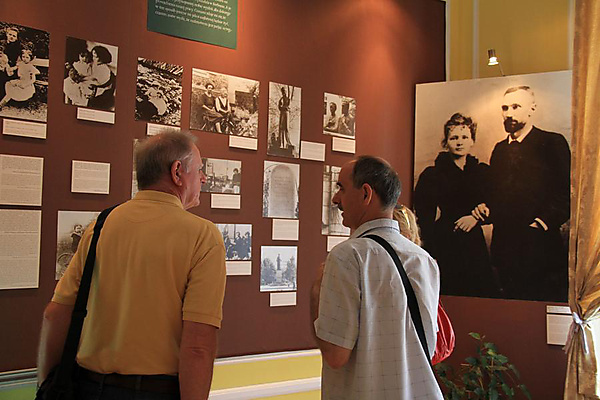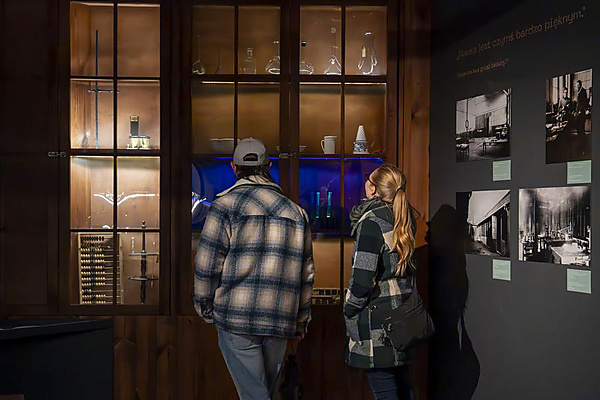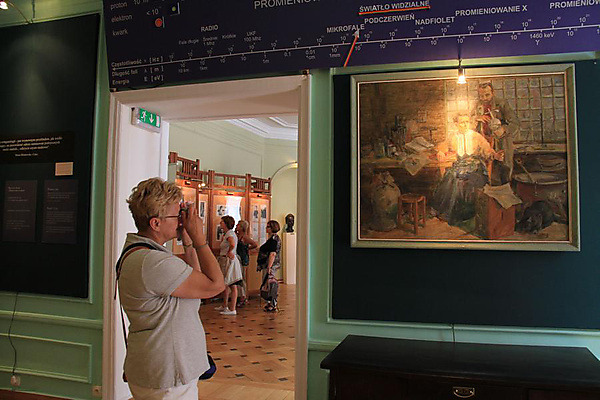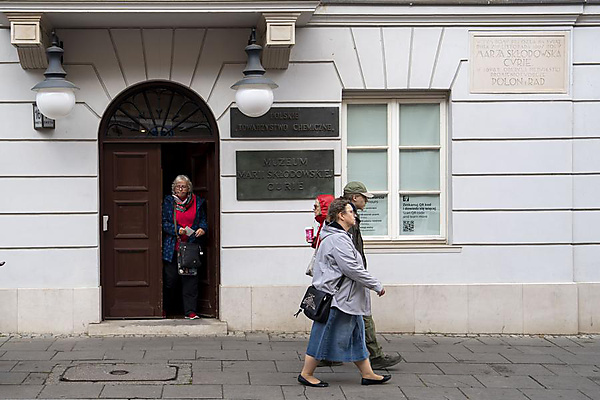 |
| Visitors look around at the Maria Sklodowska-Curie Museum in Warsaw, capital of Poland, June 9, 2011. On the 100th anniversary of awarding Maria Sklodowska-Curie the Nobel Prize in Chemistry, Poland's Senate decided to designate 2011 as the Year of Maria Sklodowska-Curie to acknowledge her great contribution to the global development of science, according to the resolution. [Xinhua/Gao Fan] |
Marie Curie, embodied multitudes: a pioneering scientist, a devoted mother, a passionate teacher, a patriotic Pole, and above all, a woman who refused to be bound by her era.
WARSAW, Oct. 22 (Xinhua) — The question on a wall behind the entrance of the Maria Sklodowska-Curie Museum in Warsaw, Poland, reads: "Who are you, Maria?"
It seems quite simple — until one tries to answer it. Maria Sklodowska-Curie, known internationally as Marie Curie, embodied multitudes: a pioneering scientist, a devoted mother, a passionate teacher, a patriotic Pole, and above all, a woman who refused to be bound by her era.
In the modest townhouse at 16 Freta Street, where Maria was born more than 150 years ago, glass cases display her notebooks, photographs, and experimental instruments once used by her and her husband, Pierre Curie, alongside replicas of her Nobel certificates in physics and chemistry.
Organized around her many identities — such as "Daughter and Sister," "Student," "Wife, Mother and Scientist," "Pole," and "Woman" — the exhibition retraces her journey from a Polish girl to the first female Nobel laureate and the only person ever to receive two Nobel Prizes in the sciences.
 |
| Visitors view exhibits at the Maria Sklodowska-Curie Museum in Warsaw, Poland on Oct. 7, 2025. The Maria Sklodowska-Curie Museum displays her personal belongings, letters, photographs and research instruments, tracing her journey from Warsaw to Paris and her remarkable scientific achievements. [Xinhua/Xia Yuanyi] |
"This place is more than a museum," Barbara Golebiowska, the museum's director, told Xinhua recently. "It's where her story began — the story of how she sparked a chain of women's strength."
That "chain," Golebiowska explained, began with Maria's own family, who believed that education could transform lives and that women deserved the same opportunities to pursue it. Her mother ran a girls' school in Russian-ruled Warsaw in the mid-19th century, and her sister Bronislawa, one of the first female doctors in Paris, made a pact with Maria to fund each other's studies. Maria worked as a governess in Poland to support Bronislawa, who later helped her study at Sorbonne University.
That spirit of sisterhood shaped the course of Maria's life. In science, she opened doors for younger women; during World War I, she trained hundreds to operate X-ray equipment that treated the wounded. Around the 1910s, she helped found the Radium Institute in Paris and headed its physics laboratory, which by the late 1920s had hosted researchers from more than a dozen countries — nearly half of them women, according to archives.
"She helped other women build their scientific careers," Golebiowska said. "What's incredible is that many of those women later returned home to do the same — guiding and inspiring others."
 |
| A visitor looks around at the Maria Sklodowska-Curie Museum in Warsaw, capital of Poland, June 9, 2011. [Xinhua/Gao Fan] |
More than a century later, that legacy endures in the museum itself, where Maria's devotion to science and her faith in women's empowerment are carried forward by those who keep her story alive.
Established in 1967, the museum now has about 20 staff members — over 80 percent of them women — including educator Aleksandra Wysocka, who often guides local schoolchildren through Maria's story. She said she hopes they "find their own answers while discovering who Maria was and how she turned possibility into reality."
For Golebiowska, such inspiration remains vital because even today, women continue to face both external and internal barriers - from persistent stereotypes to self-doubt.
"Many women still think, 'I'm not good enough,' or 'Math is for men.' These are not truths but stereotypes we must unlearn," she said. "We are in a better place than Maria was, but there is still a long way to go — especially when it comes to empowering women in Science, Technology, Engineering, and Mathematics (STEM) fields."
As world leaders gathered in Beijing earlier this month for the Global Leaders' Meeting on Women, calling for modernization that includes and benefits women, Golebiowska said Maria's message feels more relevant than ever.
"From the very beginning, girls must be encouraged to believe in their own strength, potential, and possibilities," she said. "We must believe women can change the world — and Maria is the best example."
Visitors to the museum often echo that sentiment. "Maria lived in a time when women had so few rights, yet she accomplished so much. For us now, with many more opportunities, her life reminds us to make the most of them," said Nadja Padar, a tourist from Slovenia.
As she left the museum, Chen Keyu from China shared her own answer to the question at the entrance: "Maria is herself. She followed her heart and passion with determination — and in doing so, defined who she became."
 |
| This photo taken on Oct. 7, 2025 shows the exterior view of the Maria Sklodowska-Curie Museum in Warsaw, Poland. The Maria Sklodowska-Curie Museum displays her personal belongings, letters, photographs and research instruments, tracing her journey from Warsaw to Paris and her remarkable scientific achievements. [Xinhua/Xia Yuanyi] |
(Source: Xinhua)
Editor: Lei Yang